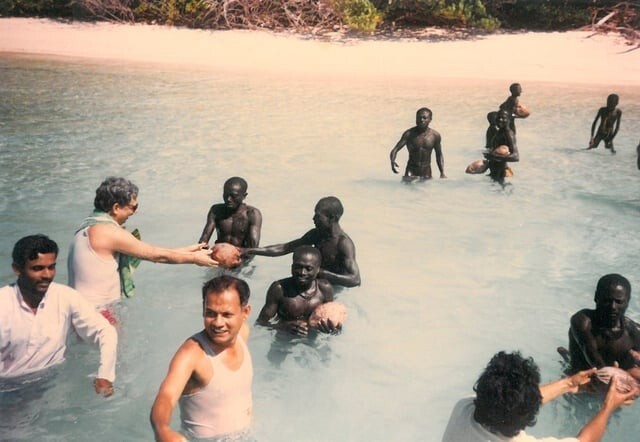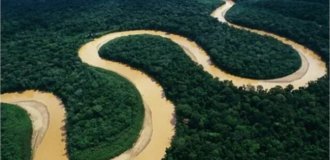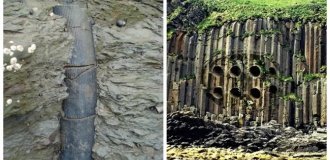The first peaceful meeting with the most closed tribe on the planet (7 photos + 1 video)
Amazing rare footage from the 1990s shows the first peaceful contact with the Sentinelese, a mysterious tribe believed to be the world's most isolated. They live in the Andaman Islands, an archipelago between India and Myanmar. 
The Sentinelese are a tribe living on the island of North Sentinel, which is located in the Indian Ocean between India and Myanmar. The tribe is known for being almost completely isolated for about 30 thousand years. Over the years, they had several contacts with people from other countries - although they did not always end well. This video dates back to 1991: then, on January 4, Trilokinath Panditt, director of the Anthropological Survey of India, visited the Sentinelese island with his colleagues. 
The footage shows researchers approaching the island by boat, and Sentinelese people come out onto the beach to watch the visitors. The scientists began throwing coconuts into the water as a sign of peace, and the tribe members carefully collected them. This was the first peaceful contact with the isolated tribe. During other attempts, arrows began to be shot at arriving guests: for example, when representatives of the Survival International organization tried to swim to the island. In 1997, Indian specialists stopped visiting the Sentinelese due to security concerns. Subsequent studies were carried out only from long distances or from the air. 
The indigenous people of North Sentinel Island are currently protected by law. It is prohibited to cross to their island and approach it closer than 9 km. In 2018, a tragic incident occurred: 26-year-old American John Allen Chau reached North Sentinel Island by paying fishermen for the crossing. Some Christian groups claimed that the guy was a missionary and wanted to visit the island for religious purposes. But when he got there, tribesmen armed with bows and arrows killed him. 
Now there are about 150 people in the tribe. The Sentinelese lead a hunter-gatherer lifestyle: they obtain food by fishing, collecting shellfish and plants, and hunting. Scientists know practically nothing about their language, methods of farming and other details of life. It is known that due to their weak immunity, members of the tribe are very susceptible to diseases and infections: every two months, boats with doctors moor to the island to check their health. 






























